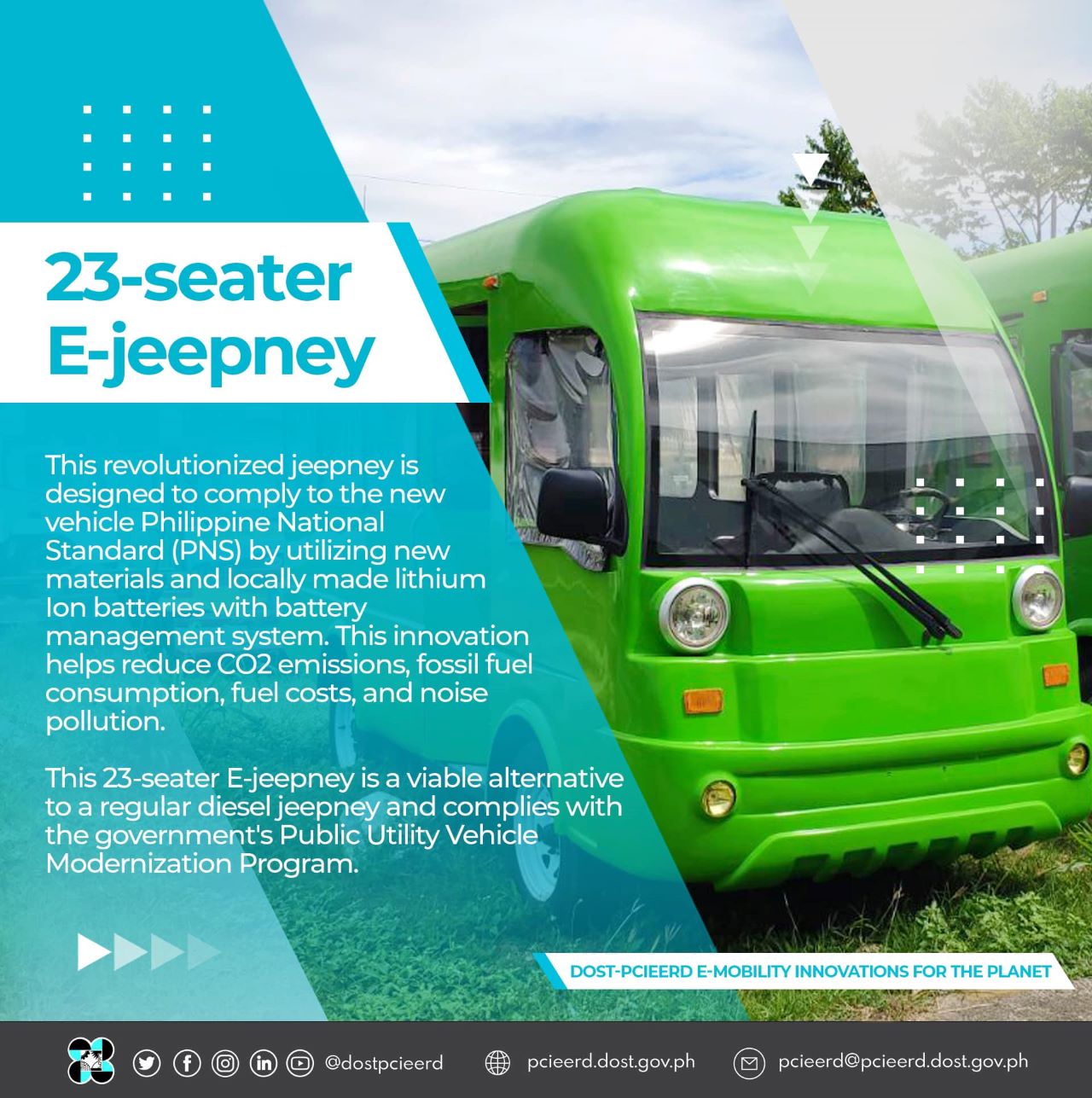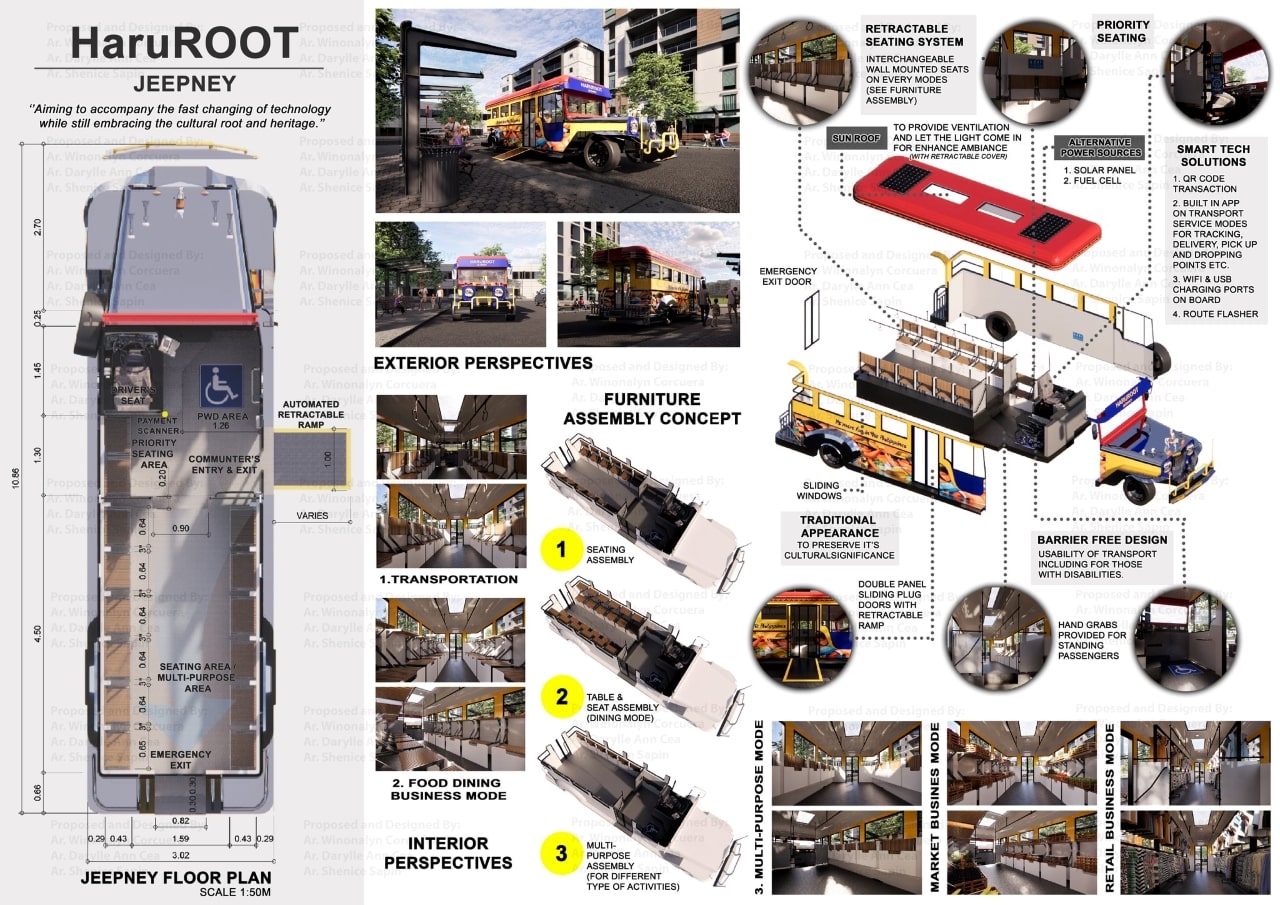
To say that the Philippines’ opinions on the PUVMP or the Public Utility Vehicle Modernization Program are split down the middle is to accept that each side will defend their opinions with rabid ferocity. And that’s with good reason. On one hand, the loss of the “iconic” jeepney on the roads will kill off one of the country’s most famous sights, and on the other, it will make way for more up-to-date, environmentally sound, and safe-for-everyone vehicles.
Before we start the debate in the comments, let’s look at what the Program was always about.
PUVMP and the operators’ and drivers’ plight and gripe

Photo: DOST PCIEERD Facebook Page
Right now, the biggest problem stemming from the PUVMP is the cost of updating a PUV fleet. Now, despite it being more commonly called a “jeepney phase-out”, it actually covers all public utility vehicles. We have to admit that most if not all jeepneys are dilapidated and simply beyond repair, but there are also UV express units and buses that are just as deplorable. And as unsafe. And not roadworthy. The implementation of the program primarily means to rid the streets of these “problem vehicles” for the safety of all. That’s the first point: safety.
Then there’s the point of having more environment-friendly means of transportation. Car manufacturers have kicked the electrification of automobiles into high gear and recent years, and that’s a good thing. As we know, the jeepneys and other PUVs plying our roads do not even comply with Euro-4 standards. Without being too “green”, so to speak, the world has adopted fuel ratings to help curb the damage being done to Mother Earth. Newer units will comply with these standards, thereby helping in reducing carbon waste. That’s the second point: human and planetary health.
And these two starting points only touch on the modernized vehicles of the PUVMP. Let’s move on to what’s on the ground and the point of view of operators and drivers.

Without PUVMP, franchises are granted to any and all operators, drivers, and their fleets. Regardless of the type of PUV (jeepney, bus, UV Express), for as long as you have a franchise, a fleet can ply the same route regardless of how many are already on the said routes. The result? Congestion. Under the PUVMP, franchises will be “consolidated” in that cooperatives or corporations will be given a monopoly along a specific route. That gives more control over vehicular volume. And that leads us to say that the third point here is the word “control”.
Next up is the registration of cooperatives or corporations with the LTFRB. We’ll speak of the biggest benefit of this in the shortest way possible. Under this provision of the PUVMP, salaries of PUV drivers will be a set amount, with no more “boundaries”. Along with fixed salaries, there will also be fixed shifts for drivers. So that’s the fourth point: no over-exertion and the giving of fair work and compensation to and for drivers.
As has been mentioned countless times, we have to consider the cost of modernizing one’s fleet. The December 31, 2023 deadline is for operators and drivers to consolidate into cooperatives or corporations. Under the provisions of the PUVMP, the cost of modernization does not fall on individuals per se. That is what the consolidation is for. With the establishment of coops or corporations, funds can be collected as a group which may help soften the blow to wallets and bank accounts. There are also bank loans and other options that the government is putting forward to help this along.
Under cooperatives and corporations, there will no longer be “individual” operators. Everything will fall on and into these groups whether it be purchasing units or their repairs. That’s going to be a win given the pool of funds within the group. So there we have the fifth point, which might be the most important and misunderstood or not-discussed-enough details of the PUVMP: cooperatives and corporations take the burden away from individuals for the many to benefit from.

Photo: Winonalyn Corcuera
Over the past weekend, so many posts have circulated showing off modernized designs of the traditional jeepney that many want to be used instead of the “minibusses” that the government is pushing as modern PUVs. Some of these actually look pretty good and given that we have the next 9 months for operators, drivers, the Department of Transportation, and the Land Transportation Franchising Regulatory Board, maybe they can even be considered as an alternative. Of course, we’ll have to wait for the next few months for any possible solutions to be put forward by all parties involved.
Now, we know this isn’t a very popular opinion, but if only, and we emphasize the words “if only” the PUVMP will be implemented fully and after all the kinks have been ironed out and options laid out, we have to recognize that it has its merits for everyone involved. Mother nature gets environment-friendly vehicles, commuters get roadworthy, dependable, and safe means of transportation, and the operators and drivers do not have their livelihoods pulled out from under them due to being incapable of complying with the PUVMP.
It might sound simple (or not) reading about it on paper, but if we take the time to look at all sides of the story, the PUVMP while still with its “shortcomings” was conceptualized to do more good than harm. Again, eyes are on this whole issue until the end of the year. At which point, we hope a common ground is laid out and a proper compromise reached. God knows we all need good public transportation and more importantly, food on our tables.
*Photo credits: We would like to thank Winonalyn Corcuera for her expressed permission to use her images for this Editorial piece. Many thanks, ma’am Winonalyn!


